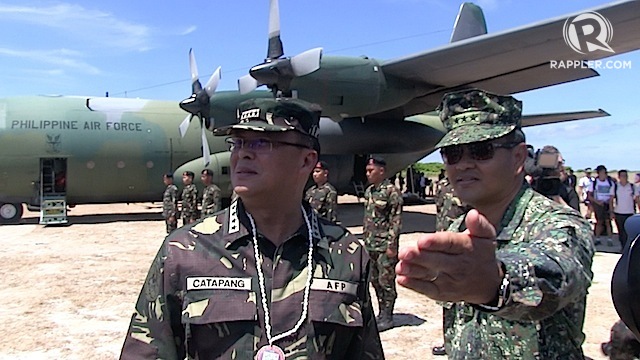Interesting development
Vietnam buys submarine-launched land attack missiles to deter China
Vietnam is arming its expanding submarine fleet with land attack missiles that could be capable of reaching Chinese coastal cities, a choice of weapon likely to be seen as provocative by China in the ongoing South China Sea dispute.
A little-noticed filing to the United Nations made by Vietnam last year, and reviewed by Reuters, shows it has bought the Russian-made land attack variant of the Klub missile for its state-of-the-art Kilo attack submarines.
The filing came to light after the independent Stockholm International Peace Research Institute (SIPRI) recently updated data on its website to show Vietnam's acquisition.
Regional military attaches and analysts see the missiles as a further sign of Vietnam's determination to counter the rise of China's larger military and part of a broader trend of Asian countries re-arming amid rising territorial tensions.
The choice of weapon is a more assertive one than the anti-shipping missiles Vietnam was expected to obtain.
While those would potentially target Chinese ships and submarines in the South China Sea, the land attack weapons are capable of precision strikes at a range of 300 kilometres, making China's coastal cities potential targets in any conflict.
Carl Thayer, an expert on Vietnam's military at the Australian Defence Force Academy, said the move was a "massive shift" beyond more routine anti-ship tactics.
"They've given themselves a much more powerful deterrent that complicates China's strategic calculations," he said, adding he was surprised by the move.
Vietnam is the first Southeast Asian nation to arm its submarine fleet with a land attack missile.
The Vietnamese defence and foreign ministries have yet to respond to questions submitted by Reuters. Vietnamese military officials have previously described Vietnam's arms build-up, including the submarine purchases, as defensive.
Moscow-based Almaz-Antey, parent company of the missiles' manufacturer Novator, declined to comment on any weapon sales to Vietnam.
LIKELY TARGETS
Rather than risk an attack on cities such as Shanghai, it is more likely Vietnam would see closer ports and airfields, such as the naval base at Sanya on China's Hainan Island and facilities on land reclamations China is building in the South China Sea, as potential targets, Thayer said.
While communist parties rule both Vietnam and China, Hanoi has long been wary of China, especially over Beijing's claims to most of the potentially oil-rich South China Sea.
Beijing's placement of an oil rig in waters claimed by Vietnam last year sparked riots in Vietnam and infuriated Hanoi's leadership.
The two navies routinely eye each other over disputed holdings in the sea's Spratly islands, which straddle some of the world's busiest shipping lanes.
Before obtaining the weapons, Hanoi's previous land attack capabilities were limited to a handful of ageing Scud missiles and more limited weapons fired by Russian-built Su-30 aircraft.
Vietnam's navy has taken possession of three Russian-built Kilos and a fourth is in transit under a $2.6 billion deal struck with Moscow in 2009, according to Vietnamese state press reports. A fifth is undergoing sea-trials off St Petersburg and a final sixth submarine is due for completion in 2016.
SIPRI has logged the sale of 50 anti-ship and land attack Klubs to Vietnam as part of the deal, with 28 having been delivered already over the last two years. The precise number of land attack missiles it has bought is not publicly available.
Collin Koh of Singapore's S Rajaratnam School of International Studies said it was unclear whether Vietnam had the full electronic capabilities to deploy the missiles at peak effectiveness.
"But even with those caveats, this is still significant... the Vietnamese have realised that without the ability to launch a counterstrike, their deterrence would have been quite limited."
Moscow-based strategic analyst Vasily Kashin said the Kilos sold to Vietnam are more advanced than those used by China while Moscow has never sold the Klub land attack missile to Beijing, which has developed its own similar weapon, the YJ-18.
Zha Daojiong, an international relations professor at Beijing's Peking University, said the move was part of a "normal" regional rearmament trend and Hanoi would be aware of the costs of ever using them against China.
"It is a loaded pistol, but can (they) afford to fire it?," he said.
China's Defence Ministry spokesman Geng Yansheng, when asked about the missiles and whether Beijing had expressed concern about them to Hanoi, said the two country's militaries were always in close touch.
"We have confidence we can together properly maintain this relationship," Geng told a monthly news briefing on Thursday.
Trevor Hollingsbee, a former naval intelligence analyst with Britain's defence ministry, said Vietnam was creating China's biggest strategic headache in the South China Sea.
"All indications are that they are surmounting the submarine learning curve quite rapidly...this is a very real problem for China," he said.










